A snake plant thrives in moderate to bright indirect light but can also tolerate low light conditions.
Sansevieria, commonly known as the snake plant or mother-in-law’s tongue, is a beautiful and easy-care plant that can enhance the aesthetic appeal of any space. Besides its sculptural beauty, snake plants have air-purifying qualities, making them an excellent addition to your indoor environment. They can effectively remove harmful chemicals from the air and release oxygen, improving the overall air quality in your home or office.
In order for your snake plant to thrive and maintain optimal growth and health, it’s essential to understand its light requirements. Like all plants, snake plants require a certain amount of light to undergo photosynthesis, the process by which they convert light energy into chemical energy to fuel their growth and development.
Snake plants are adaptable and can survive in various lighting conditions. However, to ensure their optimal growth, they have specific light preferences. In this article, we will delve into the ideal light conditions for a snake plant and provide you with practical tips to help you create the perfect environment for your plant to thrive.
Understanding the Sunlight Needs of Snake Plants



Snake plants, also known as Sansevieria, are succulents that have adapted to thrive in arid climate zones. They possess an interesting photosynthetic process called Crassulacean Acid Metabolism (CAM), which allows them to conserve water. During the day, snake plants keep their stomata closed to reduce water evaporation, making them well-suited to arid environments.
However, despite their ability to withstand low light conditions, snake plants still require sufficient sunlight for optimal growth. Sunlight is essential for the production of energy through photosynthesis, which fuels the plant’s growth and development. Snake plants utilize the energy captured from sunlight to produce new leaves and sustain their overall health.
No products found.
Snake plants have a moderate growth rate that is influenced by the amount of light they receive. While they can tolerate lower light conditions, they tend to thrive best in indirect sunlight. Sunlight falling in through a window or filtered through a curtain provides adequate light intensity without causing any harm to the plant. On the other hand, direct sunlight exposure can scorch the leaves and cause stress to the plant, resulting in damage.
Now that you understand the sunlight needs of snake plants, let’s explore the best light conditions for indoor snake plants in the next section.
Best Light Conditions for Indoor Snake Plants

When it comes to indoor snake plants, providing the best light conditions is crucial for their growth and overall health. These versatile plants can adapt to different lighting situations, making them suitable for rooms with limited natural light. However, if you want to see new growth and lush foliage, it’s important to give them the right amount of light.
Indoor snake plants thrive in bright, indirect sunlight. Placing them near east-facing windows or in well-lit living rooms can provide them with the optimal light conditions they need to flourish. This type of light exposure allows them to photosynthesize effectively, ensuring the development of healthy leaves and robust stems.
No products found.
- Choose a location near an east-facing window to provide them with gentle morning sunlight.
- Avoid exposing them to direct sunlight, which can cause stress and scorch their leaves.
- If you have limited natural light, you can also use artificial lighting to supplement their light requirements.
How Many Hours of Sunlight Do Snake Plants Need Daily?
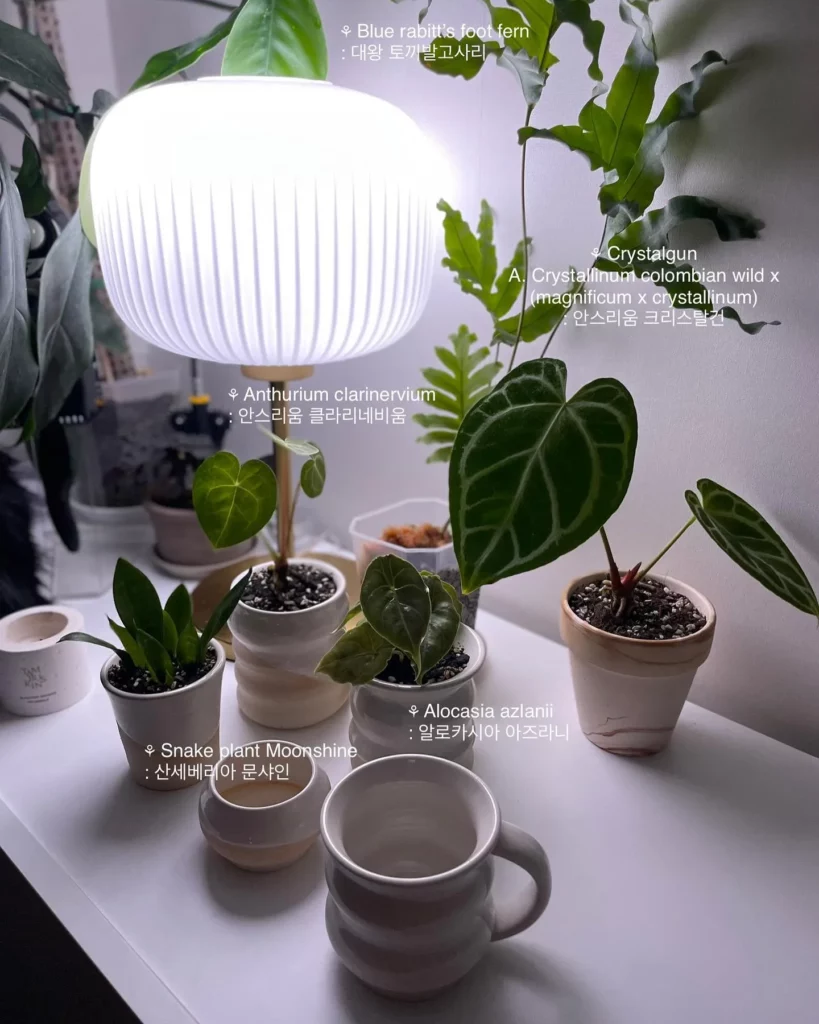


Snake plants, also known as Sansevierias, require a minimum of five hours of sunlight daily to thrive. Adequate sunlight is essential for their optimal growth and overall health. When snake plants receive enough sunlight, you will notice several positive growth indicators.
- Robust and healthy appearance: Snake plants that receive sufficient sunlight will have vibrant and lush foliage. The leaves will appear strong, firm, and full of life.
- Vivid leaf patterns: Sunlight helps enhance the leaf patterns of snake plants, making them more visually appealing. You will notice distinct and intricate designs on the leaves.
- Possibility of new leaf and flower growth: With adequate sunlight, snake plants have the potential to produce new leaves and even flower spikes. This is a sign of a thriving and well-cared-for plant.
Too Little Light: Can a Snake Plant Survive in Low Light?

Snake plants are incredibly resilient and can adapt to various environmental conditions, including low light conditions. They have a unique ability to survive in rooms without windows or darker corners where natural light is limited. This makes snake plants an excellent choice for bringing some greenery into areas of your home that lack abundant sunlight.
Despite their ability to survive in low light conditions, it’s important to note that snake plants may not thrive or reach their full potential without adequate light exposure. While they can manage with minimal light, they require a balance between survival and optimal growth.
Snake plants have developed remarkable light adaptation capabilities, allowing them to make the most of the limited light available. They are able to absorb and convert the available light into energy through photosynthesis, which sustains their growth and overall health.
However, it’s worth considering that snake plants growing in low light conditions may not produce new leaves and flowers as abundantly as those receiving more light. The growth rate may be slower, and the overall appearance of the plant may be less robust.
To ensure that your snake plant thrives in low light conditions, there are a few steps you can take:
- Choose a suitable variety: Some snake plant varieties, such as the Sansevieria trifasciata ‘Laurentii,’ have brighter yellow margins that can catch and reflect light more effectively, making them better suited for low light conditions.
- Place near a light source: While snake plants can survive in low light, moving them closer to a window or other light sources can help provide them with the maximum light available in their environment.
- Rotate regularly: Rotating your snake plant every few weeks ensures that all sides of the plant receive adequate light exposure, promoting balanced growth.
Now that we’ve explored how snake plants can survive in low light conditions, let’s take a look at the other end of the spectrum: Can snake plants have too much light? We’ll find out in the next section.
Too Much Light: Can Snake Plants Have Too Much Light?

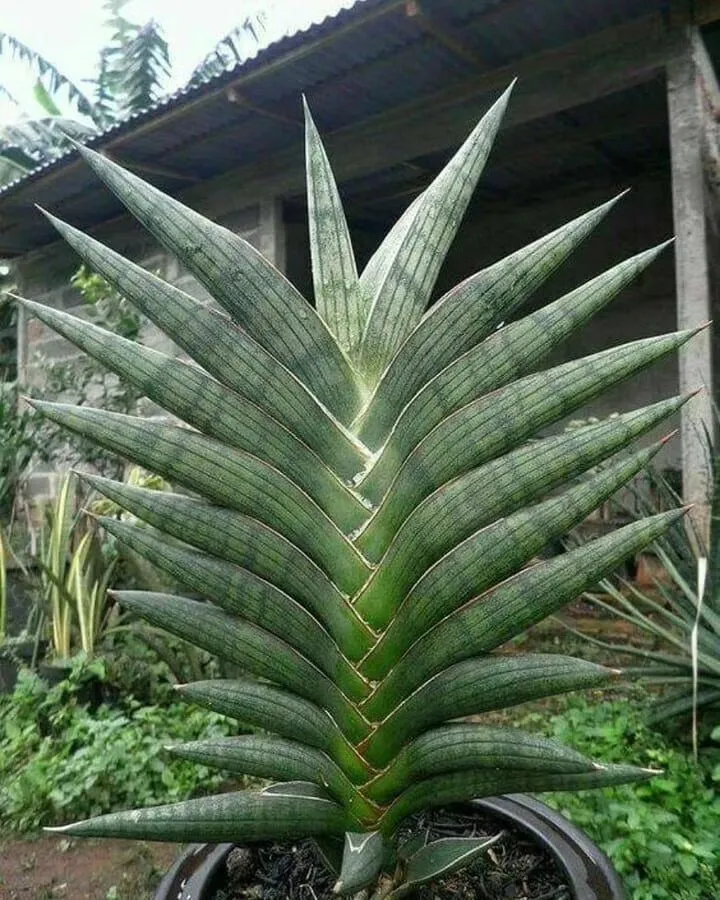
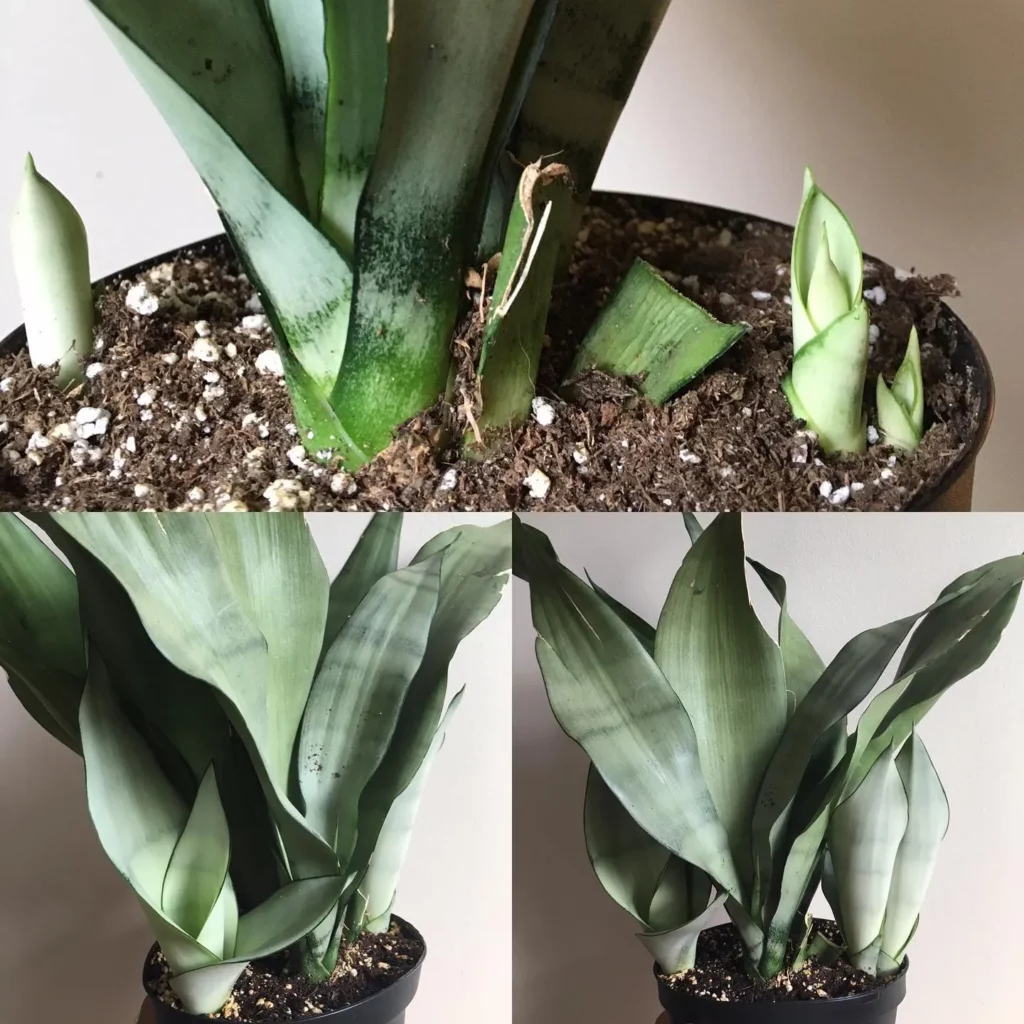
While snake plants are adaptable and can tolerate various lighting conditions, direct sunlight can be detrimental to their health. Excessive light exposure can cause sunburn, leading to browning of leaves and crumbly soil. It’s best to find a spot with indirect sunlight for snake plants to avoid the sun’s scorching rays. Indoor snake plants can also be protected from excessive light by using sheer curtains or placing them slightly away from windows.
Excessive light can result in sunburn for snake plants, causing damage to the leaves and affecting their overall health. The intense rays of direct sunlight can be too harsh for these plants, leading to adverse effects.
- Sunburned leaves may turn brown and brittle.
- The soil can become dry and crumbly due to excessive evaporation.
- The plant may exhibit signs of stress, such as wilting or drooping.
- Over time, the growth of the snake plant may become stunted.
To protect your snake plants from excessive light, it’s important to find a suitable location with indirect sunlight. This can be a spot near a window where the sunlight is filtered through sheer curtains. Alternatively, you can place the plant slightly away from the window to avoid direct exposure.
Indoor snake plants can also benefit from artificial light sources, especially if natural light is limited. LED grow lights or fluorescent lights can provide the necessary light spectrum for snake plant growth and help supplement the lack of natural sunlight.
Diagnosing Sunlight-Related Issues in Snake Plants

While snake plants are generally resilient and adaptable, they can experience sunlight-related issues that may impact their health. It’s essential to be able to recognize and address these problems promptly. Sunburn is a common issue that can occur when snake plants are exposed to excessive sunlight. Signs of sunburn in snake plants include:
- Discolored or bleached leaves
- Faded or dry spots on the leaves
- Dry and brown edges or tips of the leaves
If you notice any of these symptoms, it’s crucial to take immediate action to prevent further damage. Here’s what you can do to help your snake plant recover:
- Move the plant out of direct sunlight: Place your snake plant in a spot where it can receive bright, indirect light rather than direct sunlight. This will help protect the leaves from further sunburn.
- Provide sufficient but moderate watering: Overwatering can exacerbate the damage caused by sunburn. Ensure that the soil is well-draining and water the plant only when the top inch of soil is dry. Water thoroughly but avoid letting the plant sit in water.
- Trim off severely damaged leaves: If some leaves are severely sunburned and beyond repair, it’s best to trim them off. Use clean pruning shears and cut the damaged leaves as close to the base as possible.
Snake Plant: Special Lighting Considerations


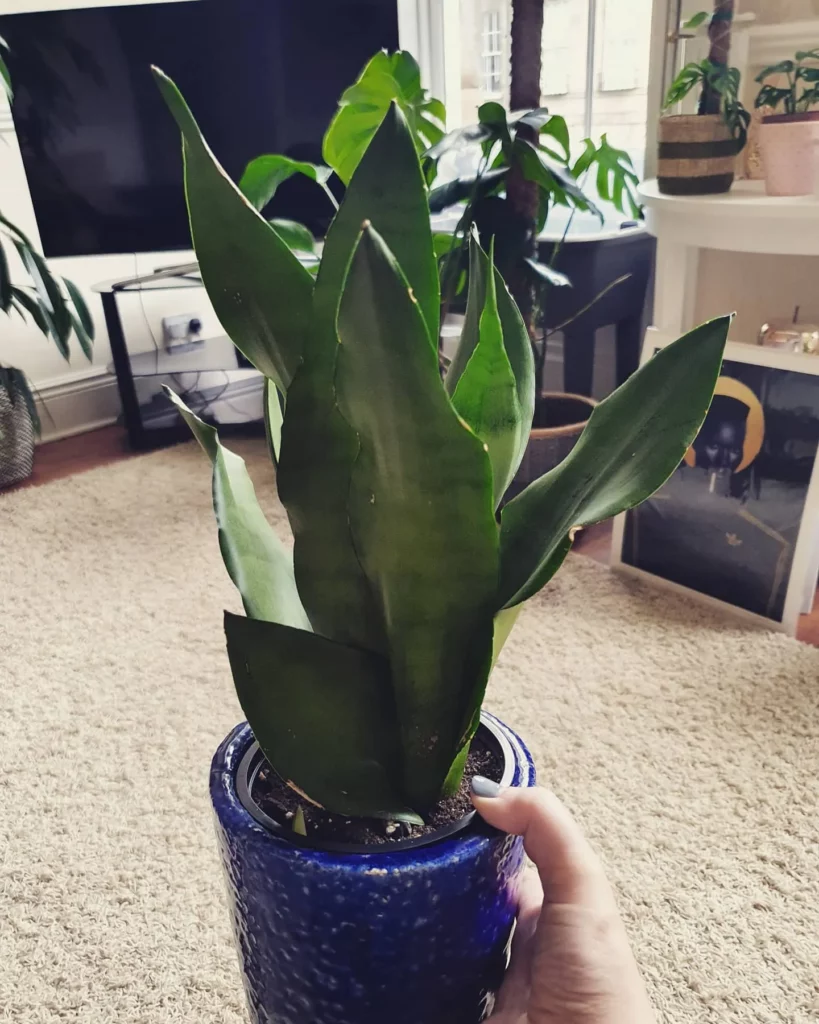
When it comes to growing snake plants, special lighting considerations are essential, particularly for variegated varieties. Variegated snake plants are more photosensitive and can be prone to sunburn when exposed to direct sunlight, so it’s best to keep them in indirect light.
If you want to provide optimal light conditions for your snake plants, artificial lighting can be a great solution. LED lights, halogen lights, and fluorescent lights are all viable options to supplement natural light and ensure that your snake plants receive the necessary light spectrum for growth.
No products found.
To showcase the special lighting considerations for snake plants, take a look at this stunning variegated variety:
By using artificial lighting, you can control the intensity and duration of light exposure, which is particularly beneficial in environments with limited natural light. Additionally, artificial lights can be adjusted to provide specific light wavelengths needed for optimal photosynthesis and growth.
It’s important to note that the specific lighting requirements may vary depending on the variety of snake plant you’re growing. When considering artificial lighting, be sure to research the lighting needs of your particular snake plant variety to provide the best conditions for its health and growth.
Snake Plant: Placement and Positioning

Proper placement and positioning are crucial for the optimal growth of snake plants. To ensure the snake plant receives adequate light exposure, consider placing it near east-facing windows. These windows provide the necessary light indoors for the plant’s photosynthesis process. In spaces with southern windows, utilizing sheer curtains can help filter the intensity of direct sunlight, preventing potential damage to the leaves.
Seasonal light level changes should also be taken into account when positioning snake plants. As the angle and duration of sunlight vary throughout the year, adjusting their placement accordingly will ensure they receive the optimal amount of light exposure. Additionally, rotating the plants every few weeks can help promote even growth on all sides, as each leaf benefits from the light exposure.
Snake plants are versatile and can adapt to different lighting conditions, but finding the right balance is key to fostering their health and overall growth. With the right placement and positioning, along with consideration of seasonal changes, your snake plant will thrive in its environment.
Sunlight and Watering of Snake Plants
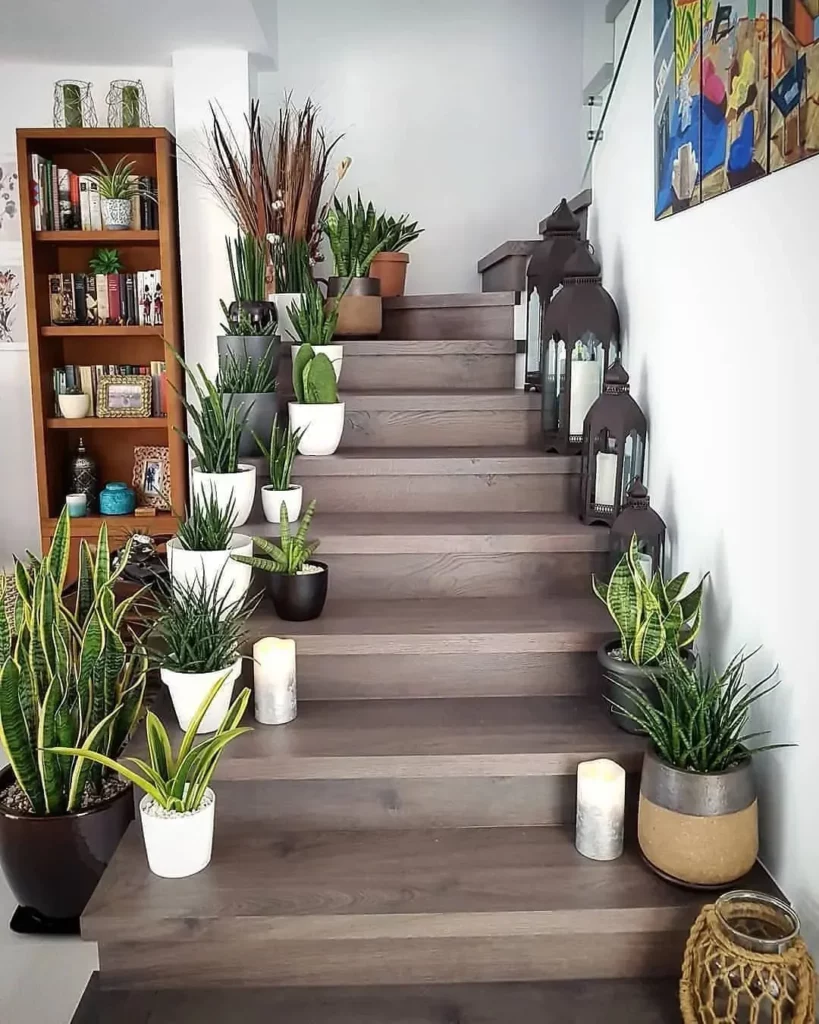
The amount of sunlight a snake plant receives plays a crucial role in determining its watering schedule. Whether your snake plant is positioned in a darker corner or a sunny area, understanding its sunlight exposure is essential for maintaining its health.
Snake plants placed in darker corners typically require less water compared to those in brighter areas. The reduced sunlight exposure slows down the plant’s metabolism, resulting in slower growth and decreased water requirements. It’s important to monitor the moisture level of the soil and adjust the watering frequency accordingly.
No products found.
On the other hand, snake plants positioned in areas with ample sunlight may require more frequent watering. Increased sunlight exposure accelerates the plant’s metabolism, causing it to utilize water at a faster rate. Check the soil moisture regularly and water the plant when the top inch of the soil feels dry.
Regardless of the sunlight exposure, it’s crucial to allow the soil to dry out completely between waterings. Overwatering snake plants can lead to root rot and other moisture-related issues. By providing a proper watering schedule, you can help the plant grow and thrive.
Snake Plants: Fertilization and Sunlight

Proper fertilization and sunlight exposure are crucial for the optimal growth of snake plants. While snake plants have relatively low fertilizer requirements, providing them with the necessary nutrients at the right time can ensure their health and vitality.
It is recommended to feed snake plants with a general houseplant fertilizer every two months during the growing season. This coincides with periods of increased sunlight exposure, when the plant is actively photosynthesizing and utilizing the nutrients for growth.
When choosing a fertilizer, it’s important to consider the nutrient requirements of snake plants. Look for fertilizers that provide essential elements, such as potassium, nitrogen, and phosphorus, which are necessary for their overall health and development.
However, it’s crucial to avoid overfertilization as this can lead to nutrient toxicity and damage the plant’s roots. Always follow the instructions on the fertilizer packaging and apply the recommended dosage to prevent any negative effects on the plant.
The amount of sunlight a snake plant receives directly impacts its nutrient requirements. Sunlight exposure plays a vital role in the process of photosynthesis, where the plant converts sunlight into energy and nutrients. Adequate sunlight exposure promotes optimal growth and ensures that the plant can effectively utilize the nutrients provided by fertilization.
To enhance the growth of your snake plant, place it in a well-lit area where it can receive indirect sunlight. This can be near an east-facing window or in a well-lit room. Remember, snake plants can tolerate low light conditions, but for optimal growth, they thrive best in bright, indirect sunlight.
By providing the right balance of fertilization and sunlight exposure, you can ensure that your snake plants grow healthy, vibrant, and full of life.
Snake Plants Pruning for Better Light Indoors
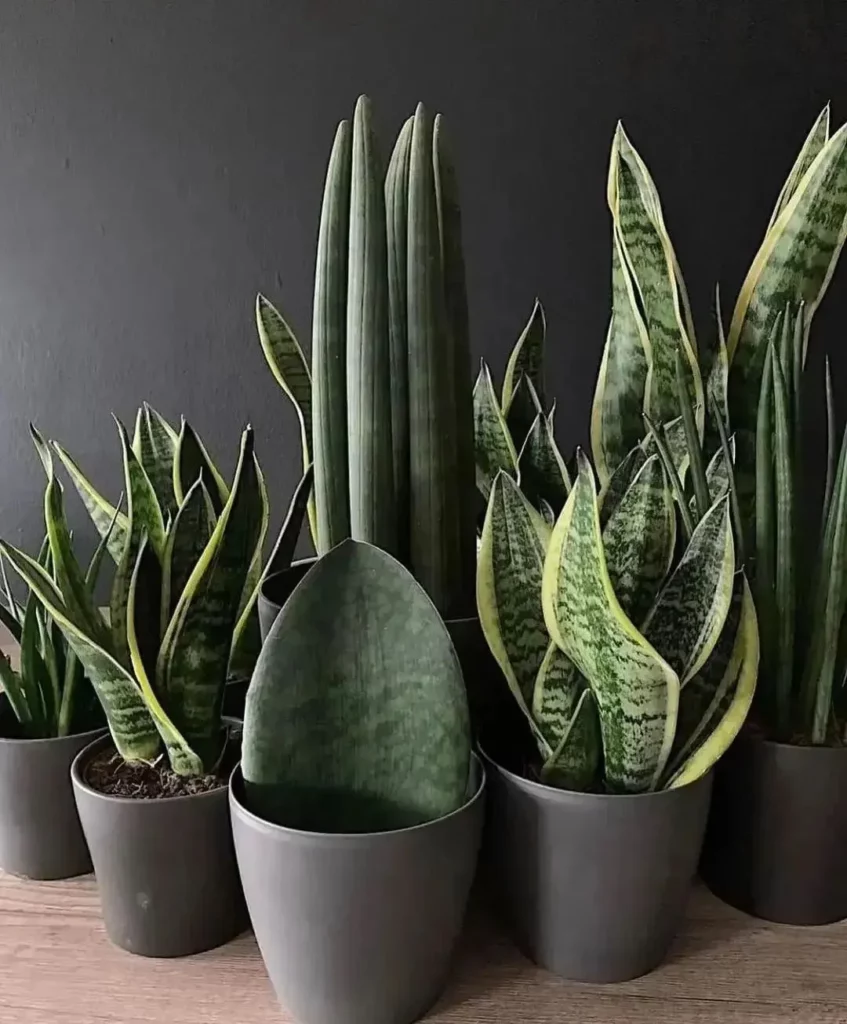
Pruning snake plants is a beneficial practice that can optimize their exposure to light and promote better growth in indoor environments. By removing damaged, dried, or toppled leaves, you can ensure that the remaining foliage receives maximum light, enhancing the overall health and vitality of your snake plant.
To effectively prune your snake plant, it is essential to use clean pruning shears. This helps prevent the spread of diseases or infections. When cutting the leaves, make sure to trim them close to the soil level. This not only allows more light to reach the remaining leaves but also improves the aesthetic appearance of the plant.
Pruning is best done in early spring or summer, during the plant’s active growing season. At this time, your snake plant will be more receptive to new growth and can quickly replace any leaves that were pruned. Removing damaged leaves not only improves light optimization but also minimizes the risk of pests or diseases spreading throughout the plant.
Remember, when pruning your snake plant, always prioritize the removal of damaged leaves while keeping the healthy, vibrant foliage intact. This will ensure that your plant thrives in its indoor environment and continues to produce new growth.
- Remove any damaged, dried, or toppled leaves.
- Use clean pruning shears to cut the leaves close to the soil.
- Prune during the plant’s active growing season in early spring or summer.
- Focus on optimizing light exposure and promoting new growth.
Snake Plants: Seasonal Care

Proper seasonal care is essential for maintaining the health and well-being of your snake plants. As the light levels decrease during late fall and winter, it is crucial to provide adequate light to ensure their growth. Remember to position your snake plants in areas that receive sufficient light, such as near east-facing windows or in well-lit living rooms. If needed, you can even consider supplementing natural light with artificial lighting sources like LED lights or fluorescent lights.
In addition to light requirements, temperature considerations play a vital role in the seasonal care of snake plants. It is recommended to maintain the room temperature above 50°F (10°C) to prevent any adverse effects on the plant’s growth and health. Keep in mind that snake plants are sensitive to drafts and cool air, so ensure they are placed away from windows or other areas with significant temperature fluctuations.
Another aspect of seasonal care is dust accumulation on the leaves, which can hinder the plant’s ability to photosynthesize. Regularly wipe the leaves with a damp cloth to remove dust and keep them clean. This simple act will promote healthier foliage and vibrant growth for your snake plants.
Lastly, watering frequency should be adjusted during the winter months. As the plant’s growth slows down during this period, it is crucial to reduce watering to prevent overwatering and potential root rot. Allow the soil to dry out completely between waterings and be cautious not to overwater, as it can cause harm to your snake plants.
Remember that providing proper seasonal care, including light requirements, temperature considerations, leaf cleaning, and adjusted watering, will ensure the continued health and vitality of your snake plants throughout the year. By implementing these care practices, you can enjoy the beauty and air-purifying benefits of your snake plants for seasons to come.
FAQ
How much light does a snake plant need?
Snake plants require a minimum of five hours of sunlight daily to thrive. They can tolerate low light conditions but will develop new growth more effectively in bright, indirect light.
What are the best light conditions for indoor snake plants?
The best light conditions for indoor snake plants are those that provide indirect sunlight. They can adapt and thrive in low light situations, but placing them near east-facing windows or in well-lit living rooms can provide optimal light conditions for growth.
How many hours of sunlight do snake plants need daily?
On average, snake plants require a minimum of five hours of sunlight daily to thrive. Signs that a snake plant is receiving adequate sunlight include a robust and healthy appearance, vivid leaf patterns, and the possibility of new leaf and flower growth.
Can a snake plant survive in low light?
Yes, snake plants are adaptable and can survive in low light conditions. They can tolerate environments with minimal natural light, making them suitable for rooms without windows or darker corners.
Can snake plants have too much light?
Yes, excessive light exposure can be detrimental to the health of snake plants. Direct sunlight can cause sunburn, leading to browning of leaves and crumbly soil. It’s best to place snake plants in spots with indirect sunlight to avoid the sun’s scorching rays.
What are the signs of sunlight-related issues in snake plants?
Signs of sunlight-related issues in snake plants include discolored or bleached leaves, faded or dry spots, and dry and brown edges or tips of the leaves. These symptoms indicate sunburn, which can have detrimental effects on the plant’s health.
What are the special lighting considerations for snake plants?
Variegated snake plants are more photosensitive and can get sunburned quickly, so it’s best to keep them in indirect light. Artificial lighting, such as LED lights, halogen lights, or fluorescent lights, can be used to supplement natural light for snake plants.
How should snake plants be placed and positioned for optimal growth?
Snake plants thrive when placed near east-facing windows or in well-lit living rooms. It’s important to consider seasonal light level changes and adjust the positioning of snake plants accordingly. Rotating the plants to ensure even light exposure on all sides can also promote healthier growth.
How does sunlight exposure affect the watering schedule of snake plants?
The amount of sunlight a snake plant receives affects its watering schedule. Plants in darker corners may require less water, while those in sunny areas will need more frequent watering. It’s important to allow the soil to dry out completely between waterings to prevent overwatering and root rot.
What are the fertilization requirements of snake plants in relation to sunlight?
Snake plants have relatively low fertilizer requirements. It is recommended to feed them with a general houseplant fertilizer every two months during the growing season, which coincides with periods of increased sunlight exposure. The amount of sunlight the plant receives can directly impact its nutrient requirements and overall growth.
How can pruning help optimize light exposure for snake plants?
Pruning snake plants can help optimize their exposure to light and promote better growth. By removing damaged, dried, or toppled leaves, the remaining foliage can receive maximum light. Pruning can be done in early spring or summer to allow the plant to grow new leaves during its active growing season.
What care should be given to snake plants during different seasons?
Snake plants require seasonal care to ensure their health and well-being. During late fall and winter, when light levels decrease, it’s important to provide sufficient light to the plants. Room temperature should be maintained above 50°F (10°C), and occasional leaf wiping to remove dust is recommended. Adjustments in positioning and light exposure may be necessary to accommodate seasonal changes.





